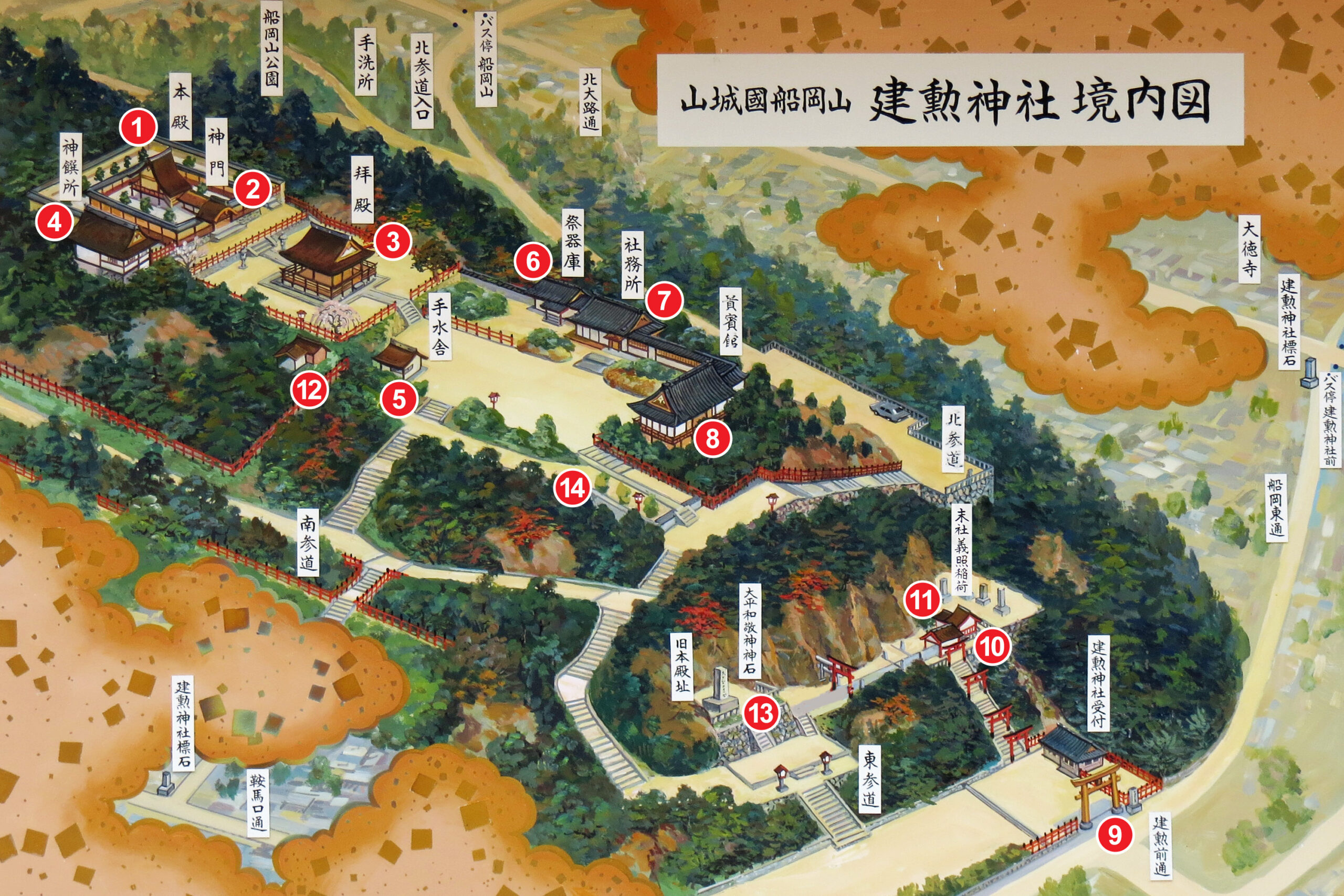
1. Honden (Main Sanctuary) / 2. Shinmon/Norito-ya (Shrine Gate/Prayer House) / 3. Haiden (Worship Hall) / 4. Shinsensho (Hall of Offerings) / 5. Temizu-sha (Ritual Cleansing Station) / 6. Saikiko (Storehouse for Ritual Implements) / 7. Shamusho (Shrine Office) / 8. Kihinkan (Distinguished Guest House) / 9. Ōtorii (Grand Torii Gate) / 10. Massha Yoshiteru Inari Jinja (Yoshiteru Inari Sub-Shrine) / 11. Inari Myōbu Motomiya (Original Inari Myōbu Shrine) / 12. Funaoka Myōken-sha (Funaoka Myōken Shrine) / 13. Daiheiwa Keishin Shinseki (Reverence for Great Peace Monument) / 14. “Atsumori” Kahi (Lyric Monument for “Atsumori”)
1. Honden (Main Sanctuary)
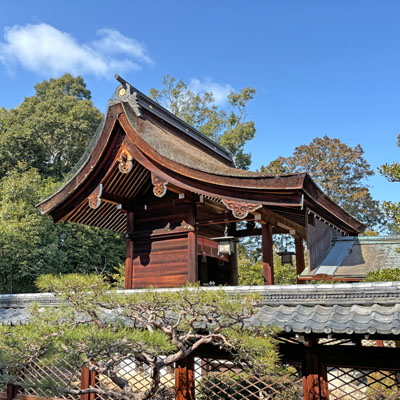
The Honden, the main sanctuary of a shrine where the deity resides, is built on the summit of Mt. Funaoka, facing east. The Honden was constructed in the nagare-zukuri style of architecture most often seen at Shinto shrines, which is characterized by an asymmetrical sloping roof that extends longer over the front of the structure. Its roof is made of Cyprus (hinoki), a tradition of roof-building using Cyprus bark thatching unique to Japan. From the late Muromachi period (late 15th century) until the Edo period (1603-1868) shrine architecture was influenced by Buddhist architecture and became more ostentatious, but after the Meiji Restoration a more traditional style of shrine architecture was promoted that relied not on engravings and bright colors, but on the natural beauty of the wood itself. Built in 1880, the early Meiji period, Kenkun Shrine’s Honden serves as a good example of modern shrine architecture.
In 2008 (Heisei 20), it was registered as a Tangible Cultural Property of Japan.
2. Shinmon/Norito-ya (Shrine Gate/Prayer House)
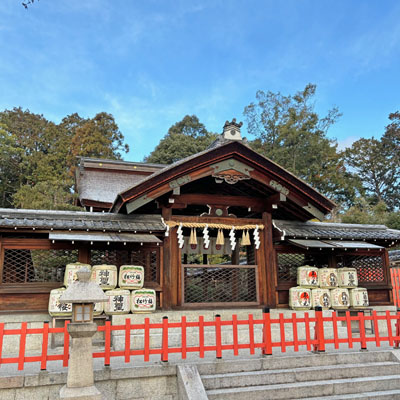
The Shinmon is located just in front of the Honden and serves as the entrance and exit to the front of the main sanctuary. Connected to the fence surrounding the Honden, casks of sake dedicated to the shrine are placed on either side. Starting with the daily worship, most rituals carried out at the shrine are conducted within the Shinmon. Visitors are not normally permitted to enter the Shinmon, but those who go to the shrine office may be escorted to the Shinmon interior, where they will receive an oharai blessing, listen to the priest read aloud the norito prayer, and offer a tamagushi (a sprig of sakaki evergreen sacred to Shinto with kamishide paper attached) before the altar and pray with two bows, two claps, and a last bow.
In 2008, it was registered as a Tangible Cultural Property of Japan.
3. Haiden (Worship Hall)
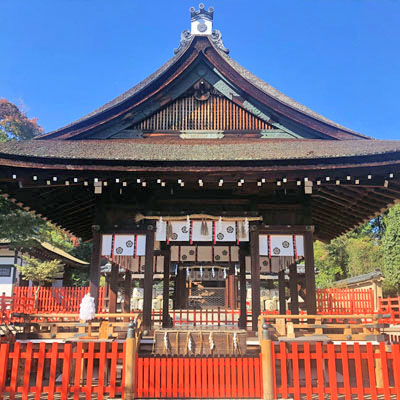
The Haiden is located to the east of the Honden. A fukihanachi style worship hall, it has no walls, and the large eaves give it a refined appearance. Inside the Haiden are portraits of eighteen of Oda Nobunaga’s thirty six loyal vassals, retainers who were determined when the shrine was founded to have served Oda Nobunaga meritoriously in advancing his ideals to unite the nation and create a peaceful and modern society. Bugaku and the nō dance Atsumori are performed here during the Funaoka Taisai festivities. An offertory box for donations and a haraigushiwand used for purifications are placed in front of the Haiden. It is here that visitors may take the wand and move it to the left, right, and left again over the shoulders for purification. Onse complete, you may make an offering and pray.(Offerings made here are used for the upkeep and repair of the shrine.) The concept of purity is very important in the Shinto religion, and this sort of purification is just one way in which it is believed visitors may cleanse their body and mind of the impurities they may have accumulated in their daily lives.
In 2008, it was registered as a Tangible Cultural Property of Japan.
4. Shinsensho (Hall of Offerings)
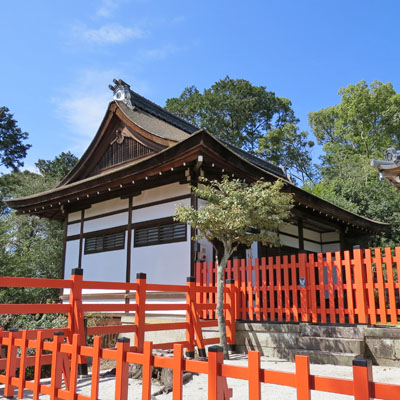
The Shinsensho is used to prepare food and drink offered to the deities, such as rice, sake, mochi rice cakes, fish, seaweed, vegetables, fruit, salt, and water.
In 2008, it was registered as a Tangible Cultural Property of Japan.

5. Temizu-sha (Ritual Cleansing Station)
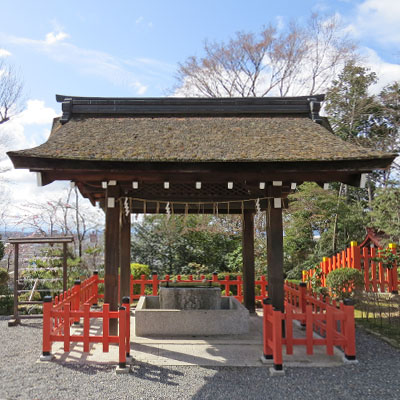
The water here is used to cleanse both hands and rinse out your mouth prior to prayer. Engraved at the center of the stone water basin is the crest of the Oda family. The Shinto religion values purity, and one is expected to purify their body and soul before presenting themselves before the deity. Washing oneself at the Temizu-sha is one of the ways this is accomplished.
In 2008, it was registered as a Tangible Cultural Property of Japan.

6. Saikiko (Storehouse for Ritual Implements)
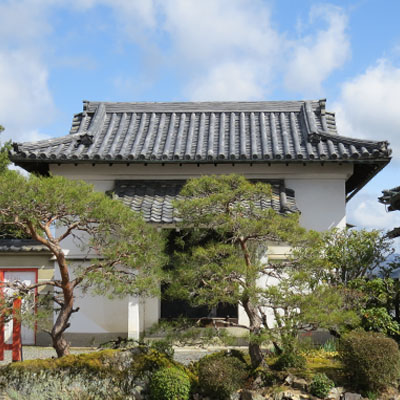
This storehouse is used to hold the shrine’s treasures and the tools used in various shrine rituals and festivities.
In 2008, it was registered as a Tangible Cultural Property of Japan.

7. Shamusho (Shrine Office)
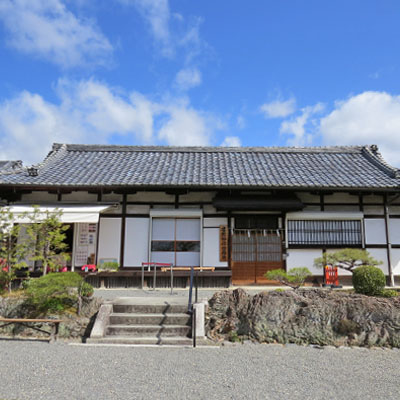
This building is where the business of the shrine is conducted. Here you can procure ofuda talismans and omamori amulets, request an official visit or prayer, or seek counsel with a priest. This is also where you can receive the shrine’s goshuin seal.
In 2008, it was registered as a Tangible Cultural Property of Japan.

8. Kihinkan (Distinguished Guest House)
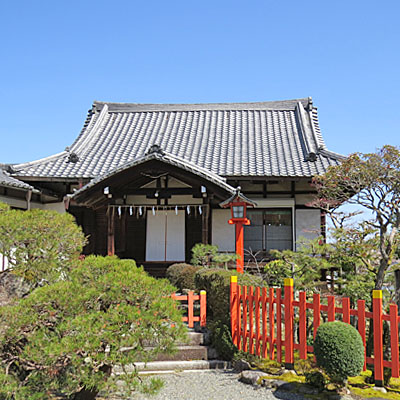
The Kihinkan is located to the east of the Worship Hall. Within is a room reserved for the chokushi, an esteemed messenger dispatched by the Emperor.
In 2008, it was registered as a Tangible Cultural Property of Japan.

9. Ōtorii (Grand Torii Gate)
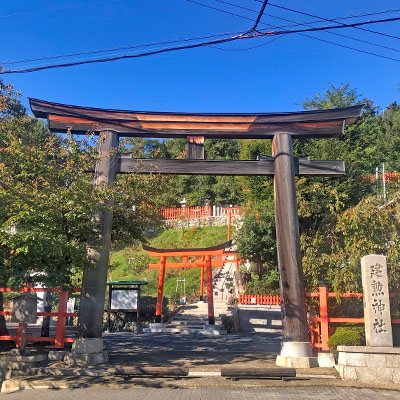
This grand torii gate is placed at the base of Mt. Funaoka facing east. Torii gates are characteristic symbols of Shinto shrines, and are placed at the entrance/exit and along the sandō path through the precincts. Torii gates come in a variety of shapes and materials, but Kenkun Shrine’s Ōtorii, like the prestigious Meiji Shrine’s, is done in the shiraki-zukuri myōjin kata style that brings out the natural beauty of the wood it is made from. The beauty of the torii’s balance between man-made structure and nature, as well as the quality of the work, is widely recognized. With a height of 7.4 meters and a width of 10.3 meters, it is the largest shiraki-zukuri myōjin kata style torii gate in Kyoto.
In 2008, it was registered as a Tangible Cultural Property of Japan.

10. Massha Yoshiteru Inari Jinja (Yoshiteru Inari Sub-Shrine)
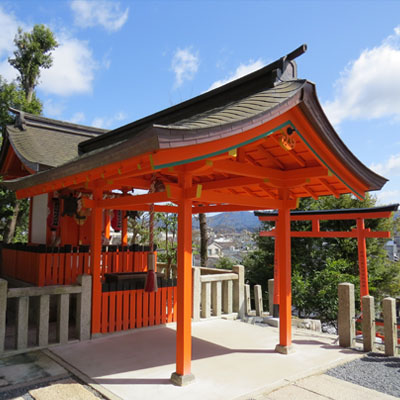
Located halfway up Mt. Funaoka, this sub-shrine is located in the northeastern precincts facing south. Three honorable deities, Ukanomitama no Ōkami, Kunitokotachi no Ōkami, and Sarutahiko no Ōkami are enshrined within.
11. Inari Myōbu Motomiya (Original Inari Myōbu Shrine)
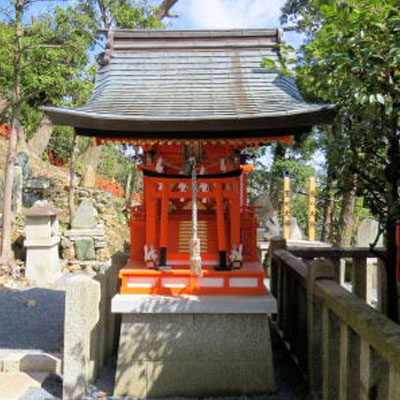
This small shrine is located next to the Yoshiteru Inari Sub-Shrine, enshrining the spirit fox of Mt. Funaoka. From ancient times it was believed that Mt. Funaoka and Mt. Inari in Fushimi had a deep connection with spirits, and it is said that the spirit fox of Mt. Funaoka is also enshrined in the Fushimi Inari Taisha Myōbu-sha.
12. Funaoka Myōken-sha (Funaoka Myōken Shrine)
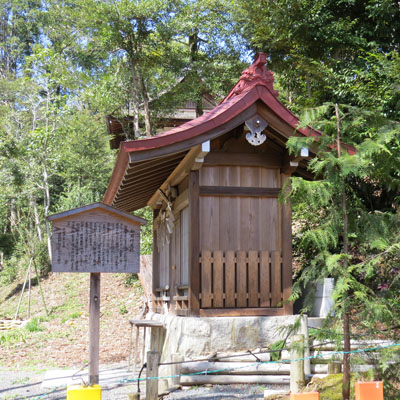
Located to the south of the Temizu-sha, the Funaoka Myōken-sha enshrines the local god of Mt. Funaoka, Genbu Ōkami. When the Heian capital was founded in 794, Mt. Funaoka, as the home of Genbu full to overflowing with natural energy, was part of the system of four god beasts who guarded the cardinal directions around the new capital. As the god of Mt. Funaoka, Funaoka Myōken is praised for its powers to erase misfortune, aid in recovery from all sorts of illnesses, and protect the household.
13. Daiheiwa Keishin Shinseki (Reverence for Great Peace Monument)
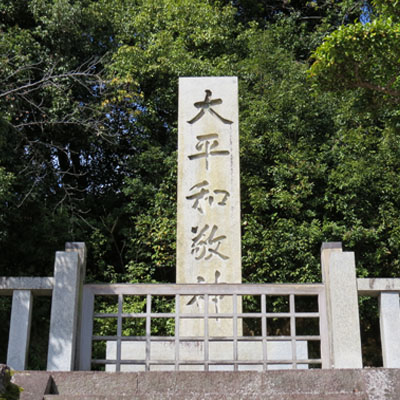
Dedicated in Showa 45 (1970) on the site of the former Honden by the Shūyōdan Hōseikai, this magnificent and solemn monument stands 6 meters tall. The Head Priest at that time, Matsubara Shizuka, received the sacred words “reverence for great peace” in a divine revelation, and the late founder Idei Seitaro of the Shūyōdan Hōseikai wrote the five kanji characters, the only work of his that survives. Each year in April members of the religious organization gather before the monument for a ceremony to pray for inner harmony, peace in the home, and the eventual achievement of world peace as part of their “benevolence to all things” philosophy.
14. “Atsumori” Kahi (Lyric Monument for “Atsumori”)
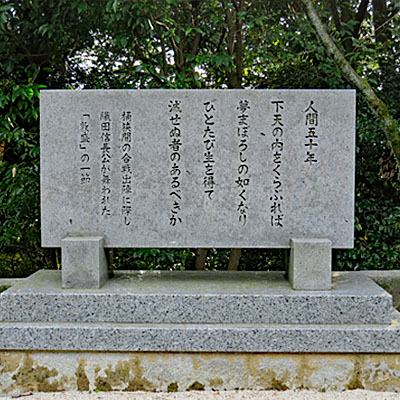
“A man’s life of 50 years under the sky is nothing compared to the age of this world. Life is but a fleeting dream, an illusion— Is there anything that lasts forever?”
This monument memorializes a verse from a dance performed by Oda Nobunaga before he set off for the frontlines at the Battle of Okehazama in 1560.
ヘッダーロゴ.png?1766703401)
e.png?1766703401)